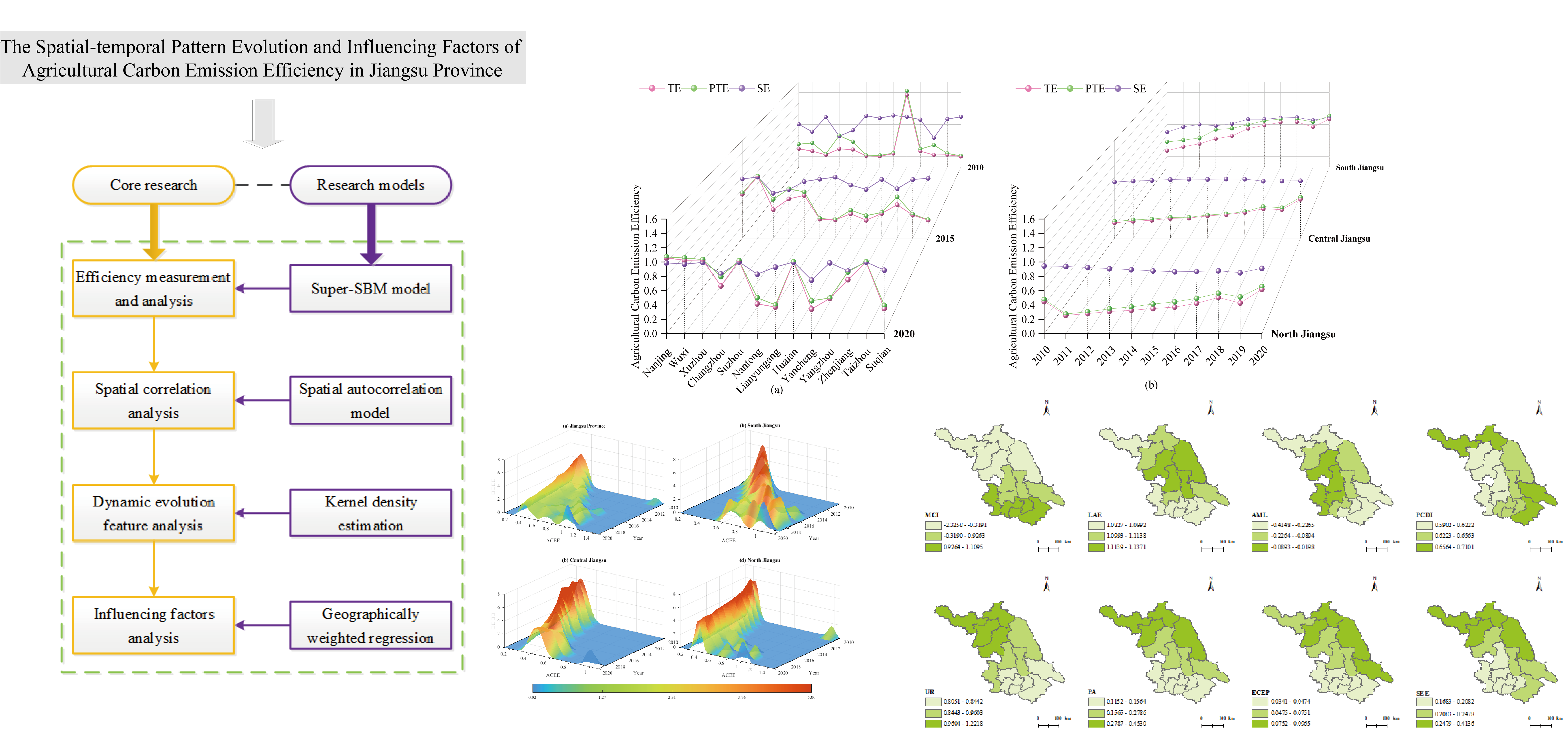-
VolumeVolume 27 (2025)
-
Issue
-
Pages1-11
- gnest_07867_final.pdf
-
Paper IDgnest_07867
-
Paper statusPublished

Agriculture, as a pillar sector of the national economy, plays a crucial role in influencing the quality of the ecological environment through its carbon emissions. Jiangsu Province is a major agricultural region in China. Measuring agricultural carbon emission efficiency (ACEE), analyzing its spatiotemporal evolution characteristics, along with the influencing factors are of great significance for advancing the achievement of agricultural sustainable development goals in Jiangsu. This paper focuses on the 13 prefecture-level cities in Jiangsu Province and initially conducts a quantitative assessment of the carbon emission efficiency in the agricultural sector from 2010 to 2020 using the Super-SBM model. Subsequently, the paper investigates the temporal and spatial evolutionary characteristics of ACEE using spatial autocorrelation models and kernel density estimation. Finally, the paper employs the geographically weighted regression method to systematically analyze and interpret the key factors influencing efficiency. Based on the empirical research findings, three main conclusions can be drawn. (1) Regarding efficiency levels, the carbon emission efficiency in Jiangsu Province's agricultural sector has gradually improved, but it remains relatively low overall, with significant efficiency loss issues. (2) In terms of spatiotemporal evolution, the ACEE in Jiangsu Province improves over time and exhibits positive spatial clustering characteristics in space. (3) Concerning influencing factors, MCI, labor-land allocation efficiency, and other factors all have a significant impact on ACEE.
Total file downloads: 7